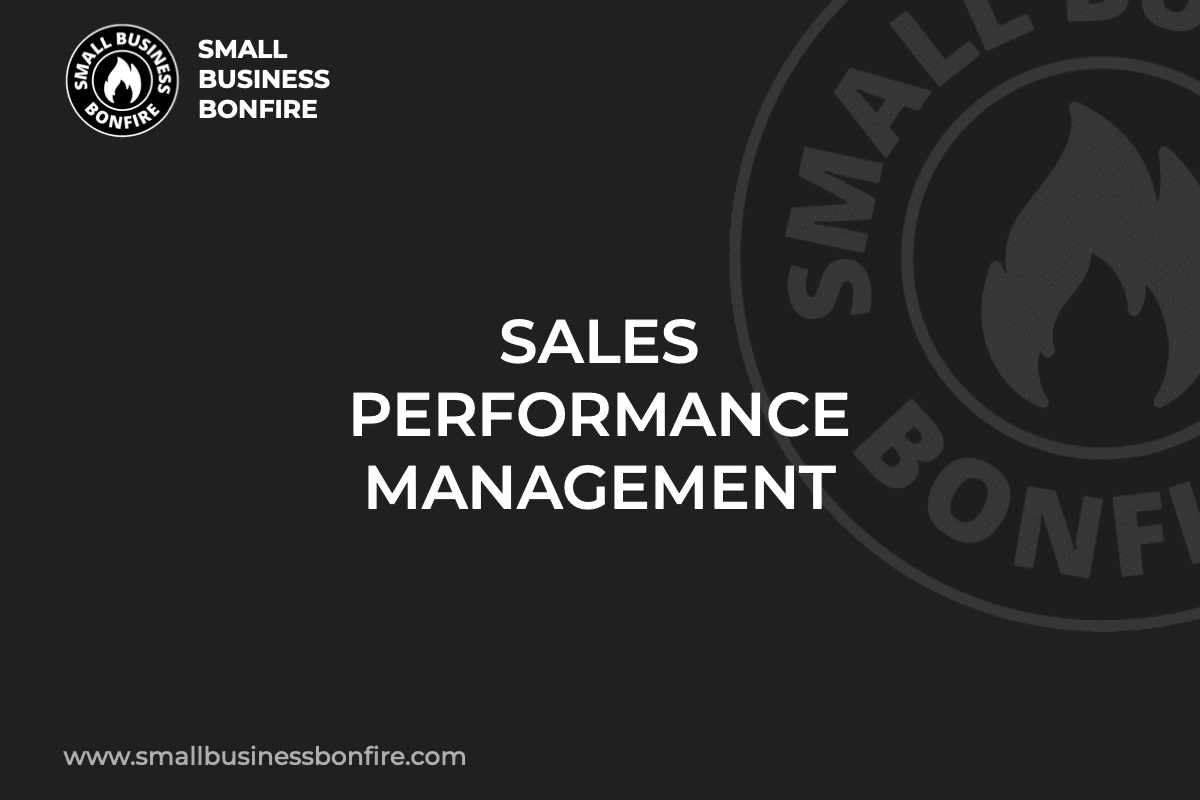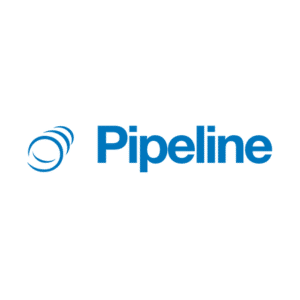Have you always wanted to forecast sales and understand your business’s sales process but don’t know how?
It can be tough, especially for small-medium businesses (SMBs), to keep track of sales performance and make data-driven decisions.
Hi, my name is AJ! I recently sold my company for multiple seven figures to focus on helping other entrepreneurs scale their businesses without making as many mistakes as I did!
One detail that helped me make more informed decisions was sales performance management (SPM). As a result, my company’s revenue skyrocketed!
Do you want to learn how to implement an SPM system into your business? If so, keep reading!
Key Takeaways
- Sales performance management shows businesses how their sales process performs.
- SPM is beneficial because it helps with sales forecasting and reduces employee turnover.
- The SPM process involves planning, managing, incentivizing, analyzing, and forecasting.
- SPM software benefits an entire company, from the sales team to the financial side of the business.
Related Reading: Best CRM for Small Businesses
SBB Featured Partners
What is Sales Performance Management?
Sales performance management, or SPM, is like the report card system we have in school but for businesses.
Think of it as a way for companies to track how well their sales team is performing.
So, just like your report card shows your grades in different subjects, a sales performance management strategy shows a business the following things:
- How many sales are made
- Which sales rep makes each sale
- How the sales team can improve overall
Sales performance management is a tool that helps businesses understand their sales better and figure out ways to sell more of their products or services.
So, just as you want to improve your grades to succeed in school, businesses use sales performance management to improve their sales and grow in their industry!
Why is Sales Performance Management Important?
Is a sales performance management strategy really that important? And, if so, why?
Below, I’ve listed five reasons why sales leaders everywhere must consider SPM!
Let’s take a look.
SPM Helps You With Sales Prediction
Sales performance management provides valuable insights into sales trends and customer behaviors, making it WAY easier to make accurate sales forecasts.
Analyzing previous sales data and sales performance metrics allows businesses to predict future outcomes with more certainty.
As a result, this data-driven approach helps organizations do the following things:
- Set realistic sales targets
- Plan effective sales strategies
- Make informed business decisions
SPM Allows Reps to Build Skills
Through sales performance management, each member of your sales team can receive real-time feedback on their sales techniques.
What does this mean for your business and its productivity?
With real-time feedback, sales leaders can make quick adjustments, and reps can see areas in which they need to improve immediately.
Further, SPM systems can identify specific areas where a sales rep may struggle, such as negotiation or upselling.
Therefore, you can create training lessons that are specific and targeted to the areas your sales team needs most.
Put simply, sales performance management serves as a dynamic and responsive tool for personal growth within sales teams (and who wouldn’t want to get better??).
SPM Reduces Turnover
Have you been searching for a way to reduce your employee turnover? Look no further than sales performance management!
Employee turnover is much more expensive than most business owners know.
SPM reduces this metric by boosting employee morale and engagement.
SPM ensures sales representatives understand their strengths and areas for improvement.
As a result, this creates a sense of accomplishment and a clear pathway for professional development!
SPM Builds a Stronger Sales Pipeline
Another reason SPM is critical for small businesses is because it contributes to building a more robust sales pipeline.
SPM does this by effectively aligning sales goals and strategies based on performance analytics.
Therefore, your sales team can easily do the following things:
- Find potential opportunity
- Identify bottlenecks in sales processes
- Optimize conversion rates
- Streamline the sales pipeline
- Increase sales productivity
SPM Improves Performance-Based Compensation
SPM enhances performance-based compensation by providing accurate, data-driven evaluations of each sales rep’s performance.
Providing individualized metrics allows businesses to distribute rewards and bonuses based on merit.
As a result, this incentivizes higher sales productivity and encourages healthy competition amongst team members!
Additional Benefits of SPM
Here are some additional advantages sales teams can enjoy when they implement sales performance management:
- Drastically cut down the time required for processing
- Diminish mistakes in operations
- Facilitate tracking of opportunities generated by each salesperson
- Enable monitoring of the number of client interactions per sales representative
- Generate sales analytics and data to inform your business strategies
- Enhance the accuracy of sales predictions
- Result in more highly skilled sales personnel
- Improve the management of sales territories
- Develop more effective compensation systems
- Augment sales and revenue
- Enhance the return on investment in sales
- Speed up the time it takes to close deals
- Eliminate inefficiencies in the sales process
- Automate mundane tasks.
As you can see, there’s no reason NOT to aim for a successful sales performance management process!
Sales Performance Management vs. Incentive Compensation Management (ICM)
Sales performance management and incentive compensation management (ICM) are two distinct but closely related concepts within the sales world.
On the one hand, SPM is a comprehensive approach that focuses on tracking, measuring, and analyzing the sales team’s performance to optimize sales results and meet business objectives.
Further, SPM considers various parameters, including:
- Sales forecasts
- Skills among sales reps
- Sales pipeline
- Performance-based compensation
- Sales planning
On the other hand, sales incentive compensation management is a subset of SPM.
This subset pertains explicitly to designing and managing compensation plans intended to motivate and incentivize the sales team.
So, while SPM provides an overarching view of sales performance, ICM zeroes in on how sales leaders can use compensation effectively to drive desired sales behaviors and outcomes.
What are the Components of the Sales Performance Management Process?
Sales performance management is only effective if you understand the components of it!
These components consist of the following things:
- Planning
- Managing
- Incentivizing
- Analyzing
- Forecasting
Let’s look at each of these aspects closer!
Planning
Planning in SPM involves setting clear, quantifiable objectives and designing strategic sales processes to achieve these goals.
Here are some things you can expect to do during the planning stage:
- Identify key performance indicators (KPIs)
- Establish sales territories and quotas
- Outline sales strategies tailored to meet customer needs and future sales trends.
Ensure your entire team meets to discuss what your company’s KPIs are because this ensures everyone is on the same page.
When companies don’t meet to discuss KPIs, there’s unnecessary confusion and unaligned goals.
Managing
Managing involves overseeing sales activities and performance.
Further, managing includes monitoring the sales team’s progress toward achieving set goals and adjusting strategies as necessary based on real-time performance data.
Also, managing encapsulates the role of providing continuous guidance and support to the sales team to enhance their skills and improve their performance.
Incentivizing
Incentivizing in a sales performance management process revolves around creating and implementing a well-structured reward system to motivate and encourage higher sales performance.
For example, incentives can include the following things:
- Bonuses
- Commissions
- Extra PTO
When you tie specific performance metrics and goals to stimulate productivity and foster a competitive, sales reps are motivated to achieve these goals!
The most important thing is to ensure goals are measurable, realistic, and time-bound!
Analyzing
Analyzing involves thoroughly evaluating sales metrics, trends, and performance data!
This process is extremely valuable and aids in the following things:
- Identifying areas of strength and weakness
- Informing future sales strategies
- Optimizing overall sales performance
Many small businesses fail to analyze data, meaning they never learn from their mistakes.
Remember, making mistakes WILL happen (trust me on this one). The best thing you can do is prevent those mistakes from ever happening again!
Forecasting
Forecasting in sales performance management entails predicting future sales trends and outcomes based on the following things:
- Historical data
- Current market conditions
- Strategic analysis
- Sales performance metrics
This predictive element not only helps in planning and strategizing future sales moves but also in anticipating potential challenges and opportunities.
As a result, you and your sales reps can make more informed decisions!
Five Ways to Increase Sales Performance
Are you feeling stuck in terms of your company’s sales performance?
Don’t worry, I’ve been there! Check out these five strategies I’ve used to boost sales performance and team morale!
Set Clear Goals
Setting clear goals provides a roadmap for your sales team, outlining exactly what is expected of them and what they need to achieve!
This clarity eliminates ambiguity, helping each sales rep focus their efforts effectively, increasing productivity and efficiency (what more could you ask for??).
Also, clear targets motivate teams because they offer a tangible measure of success, fostering a sense of accomplishment.
Regular Training and Development
Regular training and development programs equip sales teams with the necessary skills, knowledge, and strategies to effectively engage with customers and close deals.
Also, these programs do the following things:
- Foster continuous improvement
- Encourage adaptability to changing market trends
- Ensure sales reps have proficiency in using sales tools
Use Sales Performance Management Software
Sales performance management software can significantly increase sales performance by providing in-depth analytics and clear visualizations of sales metrics.
As a result, sales organizations can identify trends, strengths, and areas for improvement!
What’s great about this technology is that it automates routine tasks, allowing sales professionals to focus more on strategic activities like client interactions.
Lastly, sales performance management software facilitates effective planning and forecasting, helping sales teams set realistic targets and prepare for future market conditions.
Establish a Positive Sales Culture
Creating a positive sales culture promotes a proactive, collaborative, and customer-centric work environment.
As a result, these actions increase team morale and productivity.
A positive culture also does the following things:
- Encourages healthy competition
- Fosters resilience in the face of challenges
- Ensures dedication to meeting sales goals
- Drives higher sales performance
Incentivize Performance
Incentivizing performance is a powerful strategy to elevate sales performance by driving motivation and engagement among sales teams.
By tying rewards to specific sales targets, you do the following things:
- Stimulate productivity
- Foster healthy competition
- Inspire sales representatives to strive toward goals
Benefits of Sales Performance Management Software
Many companies hesitate to implement a sales performance management process because they think it will only benefit the sales department.
However, that’s far from the truth! In reality, SPM can benefit several aspects of a business!
Keep reading to see what I mean!
Sales Benefits
Implementing a sales performance management process has several sales benefits.
For instance, SPM can streamline the sales process, providing insightful analytics and metrics that help sales reps identify their strengths, weaknesses, and areas for improvement.
On top of that, the technology offers the following advantages:
- It fosters a more targeted approach to selling
- It enables tracking of individual sales rep performance
- It identifies high performers and those who need more training
Team Benefits
Implementing an SPM process can enhance team collaboration by fostering a shared understanding of team objectives and individual roles.
On top of that, the software aids in the following things:
- Performance tracking on a team level
- Team accountability
- Facilitating targeted improvements
- Elevating overall team productivity and effectiveness
Operations Benefits
In the context of operations, SPM can dramatically streamline administrative tasks through the automation of routine tasks such as data collection and report generation.
Further, SPM provides a holistic view of the sales process, enabling the following things:
- Strategic decision-making
- More accurate forecasting
- Efficient resource allocation
Finance Benefits
From a financial perspective, SPM can aid in boosting revenue by improving sales strategies and execution.
Also, SPM systems can provide detailed insights into sales metrics and trends, facilitating better:
- Budget planning
- Cost management
- Profitability analysis
Sales Performance Management Best Practices
Here are three best practices for SPM!
Implement a Data-Driven Approach
Using a data-driven approach in SPM helps businesses make informed decisions, identify opportunities, and detect trends.
Utilizing data analytics can lead to the following things:
- Improved sales strategies
- More accurate sales forecasting
- Better identification of sales performance issues
Relying on data from advanced software is a no-brainer.
This technology is specifically created to help businesses identify weak spots and areas that demand more attention.
Therefore, ignoring this information would be silly!
Turning to reliable, accurate data to make tough business decisions is one of the smartest decisions you can make for your company!
Regularly Review and Update Sales Performance Metrics
Sales performance metrics should not be static.
Instead, they should be reviewed and updated regularly to reflect changes in the market, customer behavior, and the company’s goals.
Regularly reviewing and updating these metrics ensure they remain relevant and accurately measure your company’s sales tactics.
Also, how are your sales reps supposed to improve if you never review your company’s metrics?
Stay on top of what’s going on within your sales department and the data and performance measures!
Encourage Open Communication
Open communication within the sales team promotes a cooperative work environment and encourages team members to share ideas, strategies, and feedback.
Also, this practice fosters the following things:
- Collaboration
- Enhances problem-solving
- Improved performance
Remember, some of your employees may be accustomed to work environments where open communication is unheard of!
With these individuals, it can take a little longer to open up and embrace open communication (and that’s okay!).
Sales Performance Management Examples
Here are two real-life SPM examples!
Example 1: Zara
Zara, a renowned fast-fashion retailer, effectively leverages its sales performance management program to maintain its quick turnaround time and stay ahead of fashion trends.
By implementing advanced SPM software, Zara successfully tracks individual employee performance and in-store sales patterns.
As a result, the brand can identify best-selling items and swiftly adapt to evolving customer preferences.
This data-driven approach has improved sales strategies and fostered a competitive and results-oriented sales culture!
Example 2: Salesforce
Salesforce, the world’s leading Customer Relationship Management (CRM) provider, has demonstrated the power of an effective SPM system in boosting sales productivity.
For example, the company uses its own SPM solution to do the following things:
- Set realistic sales targets
- Monitor sales representative performance
- Incentivize high performers
By doing so, Salesforce has fostered healthy competition among its sales reps while ensuring they remain dedicated to meeting sales goals.
As a result, the company has seen significant improvements in sales productivity and revenue growth.
Final Thoughts on Sales Performance Management
Now that you know (almost) everything about SPM, it’s time to implement it in your own company!
The benefits of a sales performance management system are crucial to remember.
These advantages include the fact that SPM helps predict sales trends and provides advanced sales performance analytics!
How will your company benefit from SPM? Let us know in the comments section below!
Newsletter Signup
Join The Leads Field Guide Newsletter for tips, strategies and (free) resources for growing your leads, and closing more deals.




